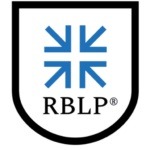Foster a Learning Environment for Your Team and Yourself
RBLP Staff – Building and Leading Resilient Teams Series
Many times, managers focus only on job performance and too little on the professional development of themselves and their team. By creating an environment where people are encouraged to learn for their personal as well as professional growth, you will build a team that wants to be part of your organization.
Newly minted managers are often so eager to meet and exceed performance goals that they lose sight of a crucial factor in recruiting and retaining top talent: the power of learning on the job. Research supports the value of offering learning opportunities to employees. Those that thrive at work and develop loyalty to an organization are generally those who find they are learning and growing at work.
Creating this “learning curve” environment is more important than ever, as organizations are confronted today with one of the toughest labor markets in history. Certainly, compensation plays a major role in attracting and retaining top talent. But for smart, motivated employees– the ones you want on your team–it takes more than money to keep them engaged. And offering educational opportunities that are not immediately tied to performance has been shown to be a powerful resource in the manager’s toolkit.
How do you create this environment, and how do you get your direct reports to buy into it? The creating part requires you, as the boss, to identify a range of situations and activities that fuel personal growth–yours as well as those who report to you. As with most initiatives, if you lead the way by availing yourself of learning opportunities, your team will follow your lead.
Education can come in many forms. There’s no shortage of formal educational options that you and your employees can take advantage of. Conferences, podcasts, and webinars … are the standard resources available to you. Start by doing the research yourself on events that address the “soft skills” of the job, such as evolving social norms at work, improving one’s communications skills, or ways to improve working in teams.
You can also talk with HR about adding educational elements to the benefits package, either as core components of the plan or, to broaden the range, as voluntary benefits. (Note: Don’t make your people pay for them!) Plenty of research has demonstrated that employees love taking personal finance training through work, for instance, or relationship-building sessions. Any opportunity you offer an employee for personal growth will make that employee a better, and more loyal, member of your team.
But there are plenty of learning opportunities that you can facilitate as part of one’s job. Remember, people who love to learn are going to be your best performers. Don’t hesitate to add new responsibilities to the shoulders of your top performers. These can be either one-time assignments or new ongoing responsibilities. They get the chance to try their hand at something new–with your encouragement–and you get the golden opportunity to see how they handle it.
Young workers, or new members of the team, benefit from being asked to take on new tasks beyond the job description. You’ll want to present it as a chance for them to learn something new with your complete support. As they educate themselves on the new tasks, you get to assess their ability to adapt, learn, and grow.
As a leader, you don’t know what someone can do until you give them the chance to succeed. And you don’t know who your eager learners are until you offer them the chance to learn something new. If you are presenting the learning experience as part of the work environment you wish to create, the good ones will jump at the chance to add to their skill sets.

